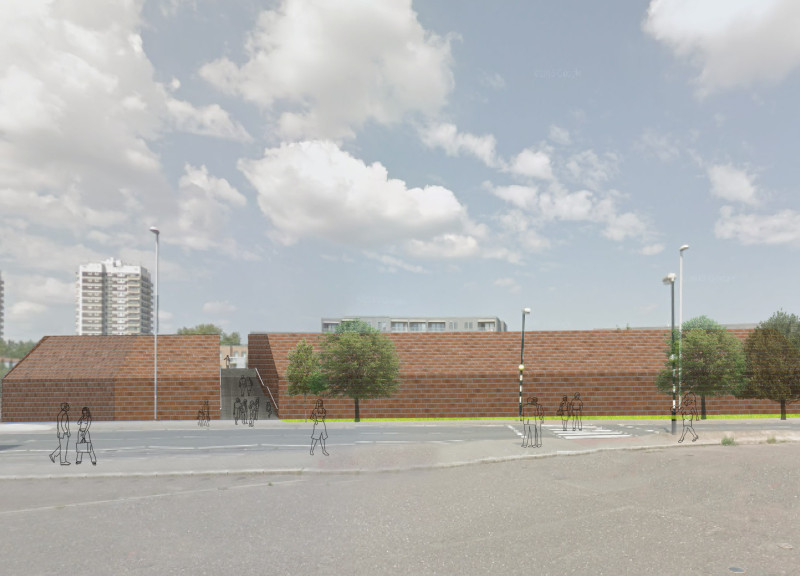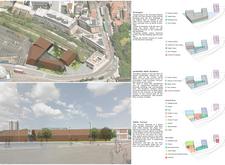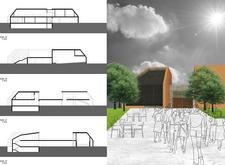5 key facts about this project
### Overview
Located near a former train station, the Internet Museum integrates contemporary design with the historical context of its surroundings. The project emphasizes functionality and community engagement while being strategically responsive to the unique characteristics of the site. It aims to educate the public about the digital realm, fostering an environment that encourages interaction and exploration.
### Spatial Strategy and User Experience
The design promotes permeability while maintaining distinct areas for privacy and focus. It features a public plaza that serves as a vital urban connector, enhancing community interaction. Clear vertical circulation routes improve accessibility, allowing visitors to navigate the museum's various functions with ease. The ground floor includes essential amenities such as the main entrance, lobby, café, and public IT suites, all facilitating visitor flow. The first floor houses seminar rooms and classrooms to support educational initiatives. An outdoor public terrace provides a gathering space that integrates indoor activities with the natural environment.
### Materiality and Environmental Considerations
The project thoughtfully employs materials that both respect the local context and enhance aesthetic appeal. A locally sourced brick is prominently featured, echoing the materiality of neighboring structures, while concrete elements offer durability and modernity. Glass panels enhance transparency in communal areas, inviting engagement. The design also incorporates climate-responsive strategies, such as roof overhangs for passive solar heating and shade, aiming to maximize natural light and reduce energy consumption. The distinct elevations reflect a thoughtful dialogue between old and new, ensuring the existing historical structure remains a focal point while allowing for the introduction of modern architectural elements.






















































